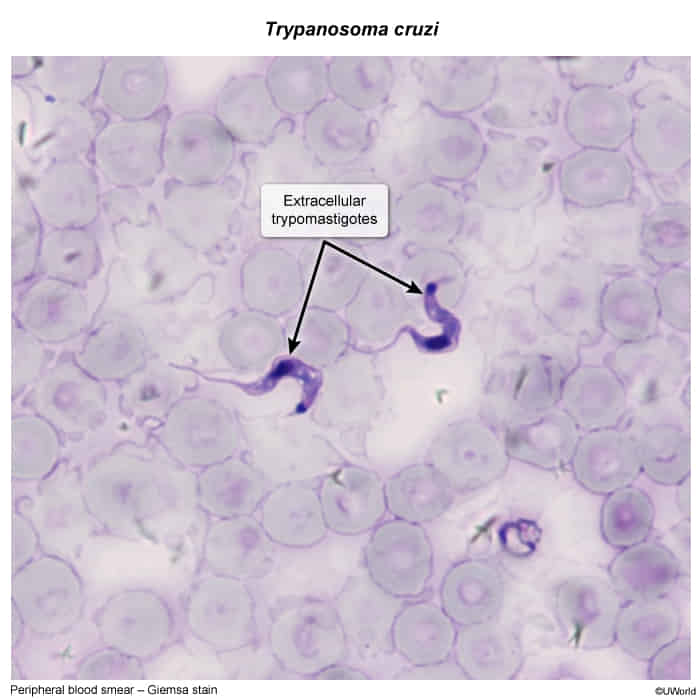Epidemiology
Etiology
- Pathogen: Trypanosoma cruzi
- Route of infections
- Vector transmission
- Numerous triatomine species of the Reduviidae family (also called kissing bug because it typically bites around the mouth)
- They hide in the cracks of houses and usually bite individuals in their sleep.
- T. cruzi is shed in the feces of the reduviid bug; feces is then rubbed into the bite site while scratching.
- Numerous triatomine species of the Reduviidae family (also called kissing bug because it typically bites around the mouth)
- Vector transmission
Pathophysiology
Clinical features
- Acute phase
- Cutaneous manifestations
- Chagoma: inflammatory edema at the bite site (usually in the face)
- Romana sign: unilateral painless edema of the eyelids and periocular tissue
- Romana sign is seen when the portal of entry of T. cruzi is the conjunctiva. Patients may also present with ipsilateral conjunctivitis and preauricular lymph node enlargement.
- Cutaneous manifestations
Diagnostics
Best initial test: direct visualization of T. cruzi trypomastigotes in thin and thick peripheral blood smears using a Giemsa stain